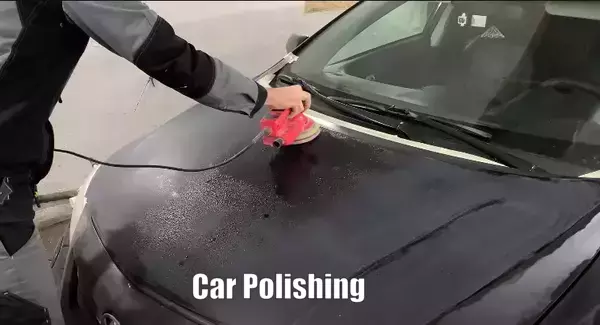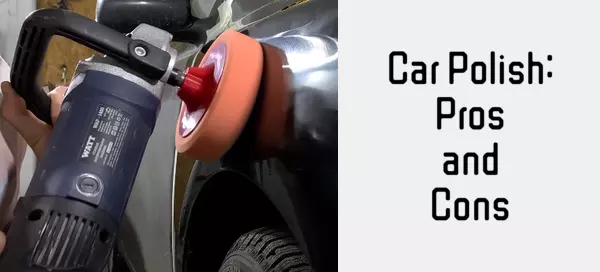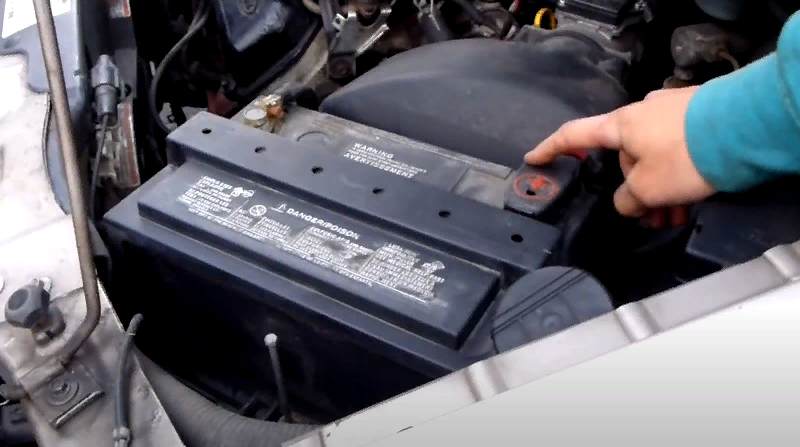You love your car and want it looking as shiny and new as the first day you bought it. Car polish can give your ride that extra sparkle, but it’s not just about aesthetics. There are pros and cons to consider. From protecting your vehicle’s paint job to potential drawbacks, we’ve got you covered in this blog post.
Achieving Excellent Results with the Best Products
If you’re looking for that professional finish on your car, then using the best products for car polishing is crucial. It doesn’t matter if you’re a DIY enthusiast or a professional detailer, achieving that flawless shine requires high-quality products.
SONAX Car Polish is a product that is highly recommended by professionals. As an “all-in-one” polish, it’s versatile and can be used on any type of car with great results. It protects the exterior from oxidation, increases paint longevity and does an excellent job at removing dead paint and pesky surface scratches. Plus, it requires very little buffing, making the job quicker and easier.
When choosing between machine and hand polishing, there are pros and cons to both options. Hand polishing allows for more precision, but machine polishing can achieve excellent results when using the right pads and polishing paste.
However, it’s important to note that hand polishing requires a lot of time and effort, which can be tiresome. On the other hand, machine polishing can cause damage if not done correctly, so it’s essential to have proper training and knowledge of the equipment.
At the end of the day, achieving that professional finish on your car requires reliable methods, whether it be by hand or using a machine. The advantages and disadvantages of each method must be considered, and the appropriate products and techniques used.
Machine Polishing vs. Hand Polishing
When it comes to polishing your car, there are two main techniques to choose from – machine polishing and hand polishing. Machine polishing is the faster and less labor-intensive option, but does it produce better results than hand polishing?
According to factual data, machine polishing does yield better results in terms of defect removal in the car’s paintwork. This is because the machines move at higher speeds, allowing them to abrade the clear coat more effectively. However, hand polishing still has its advantages. It is safer for less experienced users, and there is less risk of burning the paint.
When deciding between machine and hand polishing, consider your skill level and the condition of your car’s paintwork. If your car has only minor imperfections, hand polishing may be sufficient. However, if your car has deeper scratches or more significant defects, machine polishing may be necessary to achieve the desired results.
Regardless of which technique you choose, make sure to use the best products for excellent results. Additionally, protect your car’s paint from future scratches and damage by regularly washing and waxing it. Understanding the differences between polishing, waxing, and sealing glaze is also important to maintain a lasting shine and preserve the protective layer of your car’s paint.
Removing Dead Paint and Pesky Surface Scratches
One of the most challenging aspects of car detailing is removing dead paint and pesky surface scratches. However, this is where the advantages of using car polish come into play.
As we mentioned earlier, car polish is an abrasive substance that helps to remove oxidized paint and smooth out imperfections in the paint job. With regular polishing, you can easily eliminate fine scratches and restore your car’s paint to its former glory.
However, the drawback to using polish is that it can also remove a small layer of paint, which is why it’s important to use the right technique and products. For instance, it’s essential to use a clean, lint-free cloth to avoid inadvertently scratching your car’s surface further.
You can also choose between hand polishing and machine polishing, depending on the level of damage and the time available. While machine polishing is faster, it can be more abrasive and, therefore, less suitable for newer cars. However, if you have an older car with heavy swirls, scratches, or oxidation, heavy compounding may be required to remove deep defects and damage.
Regardless of the method you choose, it’s essential to know the difference between polishing and waxing. While waxing can help make surface scratches less obvious by filling them, it will not restore your paint in the same way as polish.
Ultimately, to protect your car’s paint from rocks and scratches, it’s crucial to practice proper car wash techniques and preserve the wax protective layer. By doing so, you can ensure that your car looks new for longer and requires less frequent polishing to maintain its shine.
Reliable Methods for Car Polishing
When it comes to car polishing, achieving excellent results is always the goal. One of the most reliable methods for achieving this is by using the best products. The Turtle Wax 1 and Done Compound is a popular choice for removing clear coat scratches and swirl marks permanently.
Another reliable method is deciding between machine polishing vs. hand polishing. While machine polishing may be faster, hand polishing can be a safer option, especially for those who are new to detailing or working on a delicate car.
To effectively remove dead paint and surface scratches, it is important to use slight abrasive polishes. Bilt Hamber Cleanser Polish is a great option that can be topped with wax or paint sealant for added protection.
While polishing is an essential step in car maintenance, it is important to understand the advantages and disadvantages associated with both polishing by hand and by machine. While hand polishing may be safer, machine polishing can provide faster, more consistent results.
Eliminating fine scratches in car detailing is also a key aspect of car polishing. With the right tools and compounds, these scratches can be removed, leaving your car looking shiny and new.
To protect your car paint from rocks and scratches, a proper car wash is necessary to preserve the wax protective layer. Waxing and sealing glaze are also great options for added protection.
Advantages and Disadvantages of Polishing by Hand and by Machine
When it comes to car polishing, there are two main methods: by hand and by machine. Each has its own set of pros and cons, and it’s important to understand them before deciding on the best approach for your needs.
Firstly, polishing by machine is much faster and less labor-intensive than doing it by hand. This means you can achieve excellent results in less time, although you will need to be careful not to burn the paint with a rotating machine. Additionally, machine polishing is more effective at removing scratches and defects than hand polishing. However, it’s crucial to use the right products and methods to prevent damage to the paint.
On the other hand, polishing by hand is safer and more accessible for less experienced car owners. It’s also more natural-looking, giving a high-gloss and sheen finish. However, it’s not as effective and can be time-consuming, limiting your results to some extent.
To get the best results, you can combine the advantages of each method. For instance, you can use machine polishing for heavy scratches or defects, and hand polishing for a natural-looking finish. It’s also essential to use proper washing and claying techniques to prepare the surface for polishing and preserve the wax protective layer.
If you’re not sure which method is best for you, consult with a professional detailer or follow step-by-step guides for DIY car polishing. Remember that with proper preparation and the right tools, you can achieve excellent results by either method.
Eliminating Fine Scratches in Car Detailing
Eliminating Fine Scratches in Car Detailing is a crucial step when it comes to achieving that shiny, new car look. As mentioned in our previous blog sections, car polish is a reliable method for removing pesky surface scratches and achieving excellent results with the best products. But what about fine scratches that are more difficult to remove?
Well, the good news is that polishing can also help to eliminate those pesky fine scratches. With the right technique, you can achieve a smooth, flawless finish that will make your car look brand new.
Whether you choose to polish by hand or by machine, the key is to use a polish that is specially designed for removing fine scratches. As we mentioned before, Ultimate Polish and Swirl-X are great options for achieving a flawless finish. However, it is important to remember that polishing can only do so much.
If you have deep scratches, it is best to seek the advice of a professional or consider repainting the affected area. Additionally, it is important to protect your car from future scratches by using wax or a sealant glaze. These products will create a protective layer that will help to prevent future damage to your car’s paint job.
Protecting Your Car Paint from Rocks and Scratches
Driving on the roads exposes your car to a variety of hazards, and one of the most common ones is rocks. Rocks getting kicked up from the road can scratch your car’s paint, leaving unsightly marks.
However, there are ways to protect your car from this damage. One effective method is to use paint protection film, also known as clear bra. This film creates a protective layer over your car’s paintwork, shielding it from scratches and other surface damage caused by rocks and other debris.
Another option is to use ceramic coating, which offers long-lasting protection against UV rays, scratches, and environmental contaminants. This coating creates a barrier between your car’s paint and the elements, helping to prevent damage.
Additionally, regularly washing and maintaining your car can help to prevent scratches from dirt and small rocks. And when you do need to remove scratches from your car’s paintwork, consider using a rubbing compound or polishing method tailored to your specific needs.
Need for Proper Car Wash to Preserve Wax Protective Layer
When it comes to maintaining the protective layer of wax on your car, a proper car wash is crucial. Without it, dirt and grime can build up on the surface, diminishing the effectiveness of the wax in protecting your car’s paint. In this section, we will delve deeper into why a proper car wash is necessary to preserve the wax protective layer.
Firstly, frequent and proper car wash is the most important preventative maintenance for your vehicle’s appearance. Not only does it remove dirt and grime build-up, but it also prevents the accumulation of contaminants that can damage the wax protective layer. Furthermore, using the correct car wash products is equally important. Using harsh detergents or dish soap can strip off the wax protective layer and leave your car vulnerable to scratches and fading.
Secondly, water spots caused by water beading can also damage the wax protective layer. Regular car wash can prevent this type of damage, as it removes any mineral deposits or chemicals that may cause water spots.
Lastly, regular car washes also help to identify any areas where the wax protective layer may have worn off or faded. This allows for prompt remediation before any lasting damage is done.
Polishing vs. Waxing: Understanding the Difference
In car detailing, understanding the difference between polishing and waxing is crucial. As mentioned in the previous sections, polishing is the process of removing imperfections on the paint surface, while waxing is the final step to protect the paint from outside elements.
You may often hear people use the term “polish” to refer to both steps, which can be confusing. A car polish is abrasive and removes a thin layer of paint, while a wax is non-abrasive and leaves a layer of protection.
If you want to correct minor scratches or swirl marks, polishing is the way to go. But if you want to protect your car’s paint and maintain its shine, waxing should be part of your routine.
The advantage of polishing is that it provides a clean surface for waxing. Waxing alone won’t remove surface imperfections or restore the paint’s shine. However, be careful not to over-polish as it can damage the paint.
On the other hand, waxing protects the paint from UV rays, bird droppings, and other contaminants. Waxing also provides a hydrophobic layer that repels water from the surface, making it easier to clean the car.
It’s important to note that waxing and polishing by hand takes longer and requires more effort, but it’s also gentler on the car’s paint. Machine polishing is more efficient and faster, but it can be risky for those inexperienced or using the wrong products.
Always use quality products and techniques when polishing or waxing your car to avoid damaging the paint. A proper car wash is also essential in preserving the wax protective layer.
Waxing and Sealing Glaze: Harmless for Your Car.
If you’re still debating whether or not to polish your car, it’s essential to know the difference between waxing and polishing. As mentioned in our previous blog sections, polishing is the process of removing any paint defects or imperfections, while waxing is the final step of coating and protecting your car’s finish. However, many car owners are concerned about whether these methods might harm their vehicles.
The good news is that both waxing and sealing glaze are harmless for your car. While these methods provide a protective layer to guard against scratches and rocks, they do not cause any harm or damage to the car’s bodywork. The sealant will not interfere with the car’s paint color or its original luster once applied. The sealing glaze retention time is very brief without polishing, so applying it after polishing will result in a shiny surface that will last for a long time.
In fact, most manufacturers recommend applying regular wax to keep your car’s exterior in good condition, and it is a cost-effective way of maintaining the longevity of your vehicle’s finish. By adding wax, you are improving the depth and richness of the color and preventing any fading caused by the sun’s UV rays, making it look better over time.
However, it is worth noting that a proper car wash is essential to preserve the wax protective layer. Without it, the wax safeguard will be quickly broken, leaving your car vulnerable to scratches and other external factors. Developing a consistent car maintenance routine enhances the performance of the sealant and gives you the best results possible.
In conclusion, both polishing and waxing your car are reliable methods to protect your car’s finish and to preserve it in the long term. They provide a beautiful shine and protect your car from environmental elements such as sunlight, corrosive material or scratch-causing objects, and so on. And there is nothing to worry about their adverse effects on your car’s exterior. With the proper waxing and washing methods, both options will be worth the investment.









